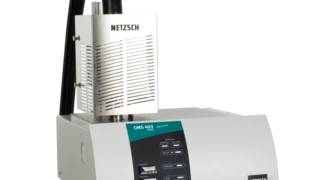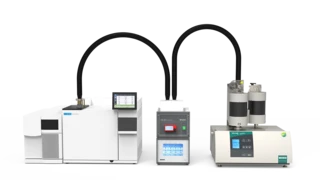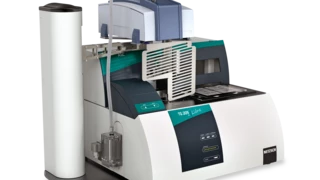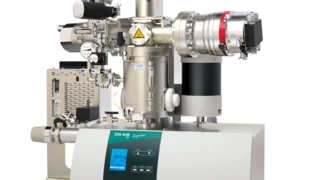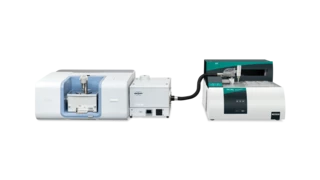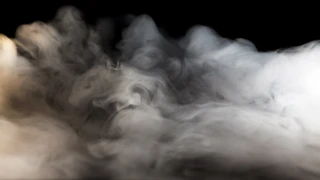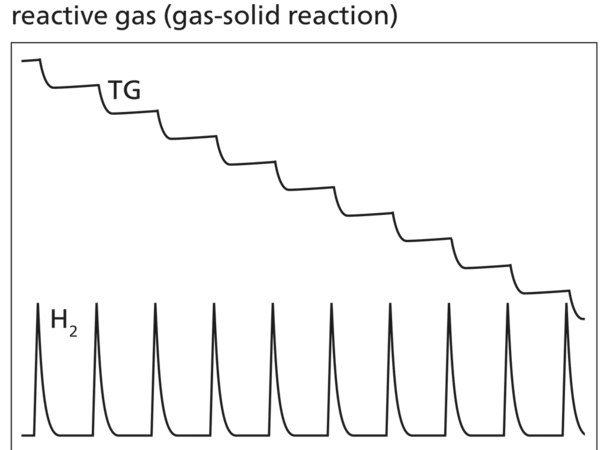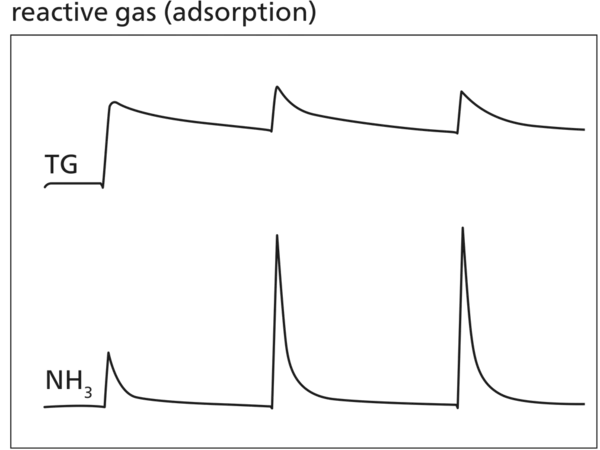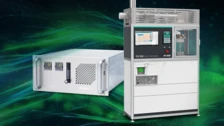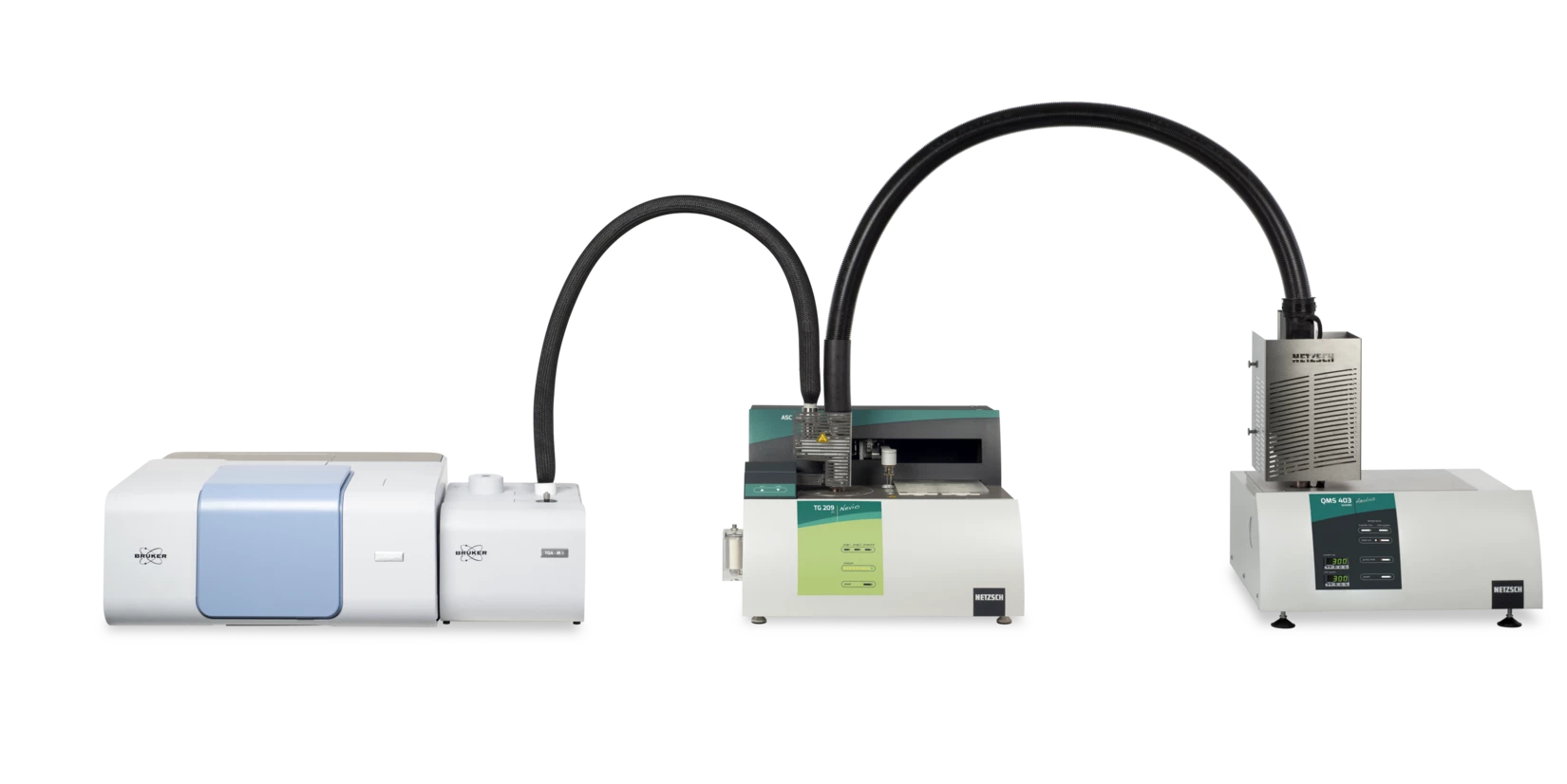
Анализ выделяющихся газов / Cовмещения
How to Detect and Identify Evolved Gases
Almost Half a Century of Development Experience in Coupling Technologies
By coupling a Thermobalance (TG, TGA) or Simultaneous Thermal Analyzer (STA, TGA-DSC) with a Quadrupole Mass Spectrometer (QMS), it is possible to detect and identify evolved gases in exact time correlation with TGA or STA signals.
The Combination with an FT-IR (Fourier Transform Infrared Spectrometer) has become an absolute must, especially in the polymer-producing, chemical and pharmaceutical industries.
The GC (gas chromatograph) separates gas mixtures based on the differences in component distribution between a stationary phase (e.g., inner coating of a capillary) and a mobile phase (e.g., He). The purge gas rapidly carries away gas components with a low affinity for the stationary phase. Gases with a high affinity for the stationary phase will follow with a significant time delay (“retention time”).
Measurement Results by Coupling
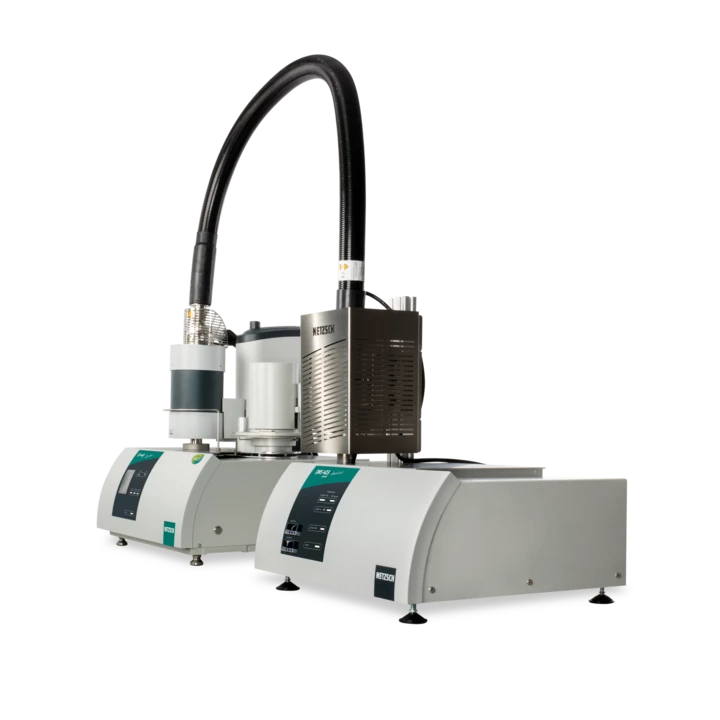
Coupling with Mass Spectrometers
By coupling a Thermobalance (TG, TGA) or Simultaneous Thermal Analyzer (STA, TGA-DSC) with a Quadrupole Mass Spectrometer (QMS), it is possible to detect and identify evolved gases in exact time correlation with TGA or STA signals. NETZSCH has over 40 years of experience in gas transfer and can offer you well-proven coupling systems: the unique SKIMMER Coupling, the capillary coupling for the QMS 403 Aëolos® Quadro, and the GC-MS Coupling.
Coupling with FT-IR Systems
Combination with an FT-IR (Fourier Transform Infrared Spectrometer) has become an absolute must, especially in the polymer-producing, chemical and pharmaceutical industries. NETZSCH Analyzing & Testing has been collaborating with the well-known producer of spectrometers, Bruker Optics GmbH, since 1993. FT-IR coupling is “more than the sum of its parts”. Let our intelligent hardware and software designs work for you!
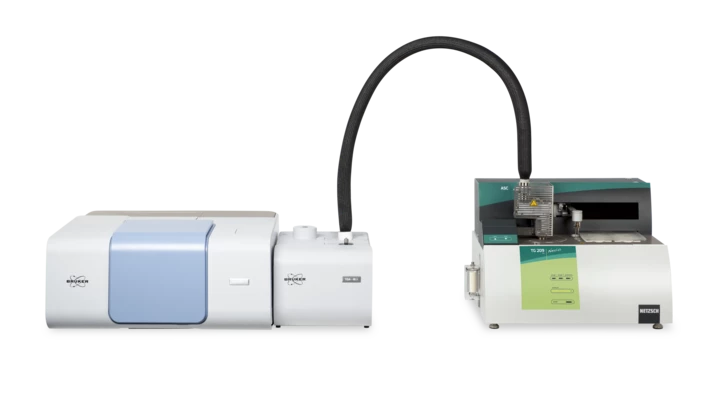
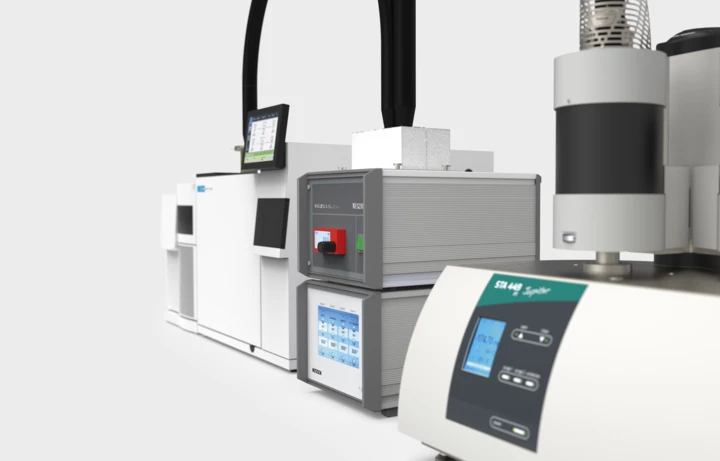
Coupling with GC-MS Systems Enable an Improved Gas Analysis of the Vaporized Materials
The GC (gas chromatograph) separates gas mixtures based on the differences in component distribution between a stationary phase (e.g., inner coating of a capillary) and a mobile phase (e.g., He). The purge gas rapidly carries away gas components with a low affinity for the stationary phase. Gases with a high affinity for the stationary phase will follow with a significant time delay (“retention time”). At the outlet of the GC column, the MS is connected. Using the pre-separation of the gases by the GC as a basis, the MS provides detailed structural information about the compounds released.
PulseTA for Quantification of the Evolved Gases and More
PulseTA is a perfect tool for achieving quantitative gas detection in separate calibration runs or even online during a sample measurement. In addition, PulseTA also allows for studying gas/solid reactions with stepwise control of the process via the injection of a reactive gas, and simplifies adsorption/desorption experiments and studies of catalytic reactions.
Application Literature

MEASUREMENT WANTED?
Our NETZSCH applications laboratory is providing contract testing services for a wide range of industries and research centers. It is equipped with state-of-the-art testing instruments allowing for a variety of thermal analysis measurements to be carried out.
Consult with the experts in our applications labs to choose the best-suited measuring method for your specific needs.


